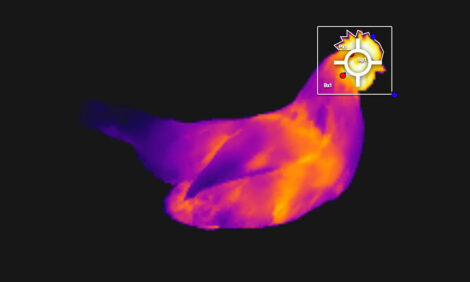



Researchers Compare Effectiveness of Recombinant Infectious Bursal Disease Vaccines
Both vaccines tested in this US study provided better protection in SPF maternal antibody-free white leghorns than in maternal antibody-positive broilers; the level of protection depended on the vaccine and on the challenge viruses. There were also differences between the ELISA kits in the detection of antibody induced by the recombinant vaccines.In recent years, recombinant infectious bursal disease (IBD) vaccines have been used to protect chickens against both Marek’s disease and IBD, according to a report by first-named author, Jack Gelb, Jr. of the University of Delaware and others.
In a report of the study sponsored by the US Poultry & Egg Association, they explain that researchers at the University of Delaware and The Ohio State University have recently completed a research project that compared the ability of two recombinant IBD vaccines to protect chickens against a variety of different IBD viruses found in the United States.
Both vaccines were found to provide better protection in SPF maternal antibody-free white leghorns than in maternal antibody-positive broilers. Protection varied against different IBD challenge viruses and differences were seen in the protection afforded by the two vaccines.
Overall, bursal lesion scores in challenged broilers appeared to be lower with the use of one of the vaccines than lesion scores in broilers vaccinated with the other vaccine. Four different ELISA kits were evaluated for their ability to detect antibody induced by the recombinant vaccines, and two of the evaluated kits were found to be more effective than the other two.
The report describes how the efficacy was studied of commercially available recombinant herpes virus of turkeys-infectious bursal disease virus (rHVT-IBD) vaccines in broiler chickens derived from an IBDV-vaccinated breeder flock at 30-weeks of age (Trial 1) and 60-weeks of age (Trial 2).
Specific-pathogen-free (SPF) white leghorn chickens, free of maternal antibodies against IBDV, were used as controls.
Broilers and SPF leghorns were vaccinated subcutaneously in the neck at one-day of age with Company A rHVT-IBD or Company B rHVT-IBD vaccines and were placed in isolators. On day post vaccination (DPV) 10, 14, 18, 22 and 26, vaccinated and unvaccinated broilers and SPF leghorns were bled and challenged via the conjunctiva sac route with reference strains ST-C, Delaware variant E (DelE), or contemporary field isolates DMV/5038/07 or FF6.
IBDV serum antibodies were detected to varying degrees depending on the commercial ELISA kit used. ELISA A and C kits more readily detected rHVT IBDV vaccine induced (active) serum antibodies compared to ELISA kits B and D.
Bursa/bodyweight (B/BW) ratios were not consistently useful as a tool for assessing IBDV challenge in broiler chickens with IBDV maternal antibodies.
B/BW ratios were more useful, however, for assessing protection against IBDV challenge in SPF leghorns.
Microscopic lesion assessment of the bursa was useful for assessing IBDV challenge in both rHVT-IBD-vaccinated broiler and SPF leghorn chickens. rHVT-IBD vaccines, in general, induced greater protection with increasing age of the chicken.
Based on bursal microscopic lesion assessment, Company A rHVT-IBD vaccination of SPF leghorns induced protection by 18 DPV and continued to protect on 22 DPV and 26 DPV in Trials 1 and 2.
Company B's rHVT-IBD vaccine induced protection of SPF leghorns by 18 or 22 DPV in Trial 1, depending on the IBDV used for challenge. However, the onset of protection was delayed until 22 or 26 DPV in Trial 2.
rHVT-IBD vaccination of broiler chickens with either commercial vaccine was not as effective as was observed in SPF leghorns, based on bursal microscopic lesion assessment. However, Company A rHVT-IBD vaccination protected broilers following challenge with ST-C in both Trial 1 (30-week-old breeder progeny) and Trial 2 (60-week-old breeder progeny).
Partial protection versus FF6 (Trial 1) and DMV/5038/07 (Trial 2) challenges were observed.
Company B rHVT-IBD vaccination protected broilers versus FF6 challenge in Trial 1. In Trial 2, the vaccine did not offer protection on the basis of microscopic lesion assessment.
Overall bursal lesion scores in challenged broilers appeared to be lower in Company A vaccinated chickens than those receiving Company B rHVT-IBD vaccine.
The USPOULTRY and the USPOULTRY Foundation project is part of the Association’s comprehensive research programme encompassing all phases of poultry and egg production and processing.
August 2014








